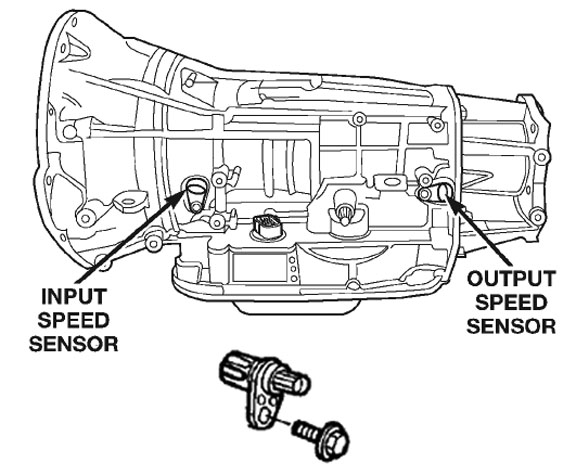
The Vehicle Speed Sensors(VSS) come in several different designs depending on the manufacturer. They are used as sensor input for the ABS and Traction Control vehicle computerized systems. This sensor inputs data to the transmission for shift control, cruise control for desired operation, ABS (anti-lock brakes) only to name a few. Most mount on the transmission or rear axle and send a varying frequency to a meter in the Engine Control Module (ECM).
In some later model vehicles you will find them located in the ABS module. If you don’t see a VSS signal on your scan tool and don’t see it mounted on the transaxle, it’s probably in the ABS system. This system uses the signal from the front or all four wheel speed sensors to calculate the vehicle speed.
Most vehicle speed sensors are located on the transmission case. These speed sensors are driven by a gear located on the output shaft. The speed sensor driven gear can be either machined and held in place by a bolt or fastened by a clip. This driven gear is is in mesh with the drive gear located on the output shaft. The sensors case, the bore, and the output shaft gear must be inspected for damage as this could be an underlying cause of premature driven gear wear. The driven gear is typically made of plastic making it softer than the drive gear. It is located on the end of the vehicle speed sensor.
As the shaft of this sensor spins it generates an on off signal to the vehicles PCM and TCM. The PCM converts this signal into vehicle speed. In later model vehicles this information is shared between computer systems via multiplexing. Multiplexing allows the control modules to communicate with each other on a common bus consisting of twisted pair wiring. Each control module is assigned its own frequency. Vehicle speed sensors located in the differential use a trigger wheel to generate the pulse signal required by the control modules. These VSS systems use different techniques to achieve the same results.
Diagnosing vehicle speed sensors includes checking the sensor with a scanner. Visually inspecting the wiring, PCM, and connectors for wear or damage. The vehicle code should in the P0500 range. The sensor can be tested with a scanner, multimeter, and compared with specifications.
The speed sensor affects so many different systems it may not be so difficult to figure out. For instance, if the vehicle suffered a transmission shifting condition and a dysfunctional speedometer it may be necessary to check for proper VSS operation. Many instrument clusters have their own self diagnostics to aid in diagnostics.